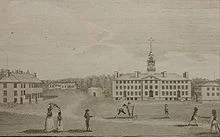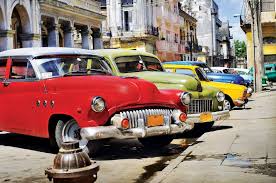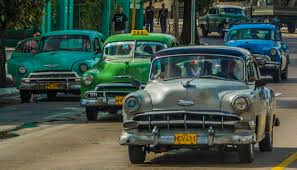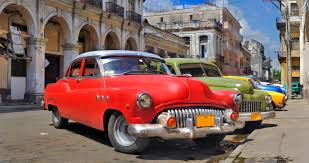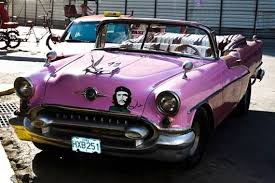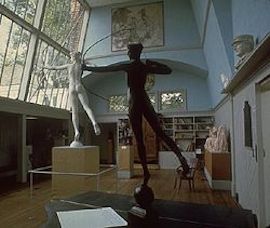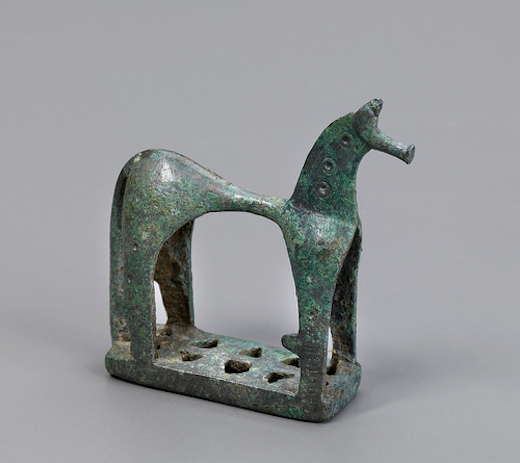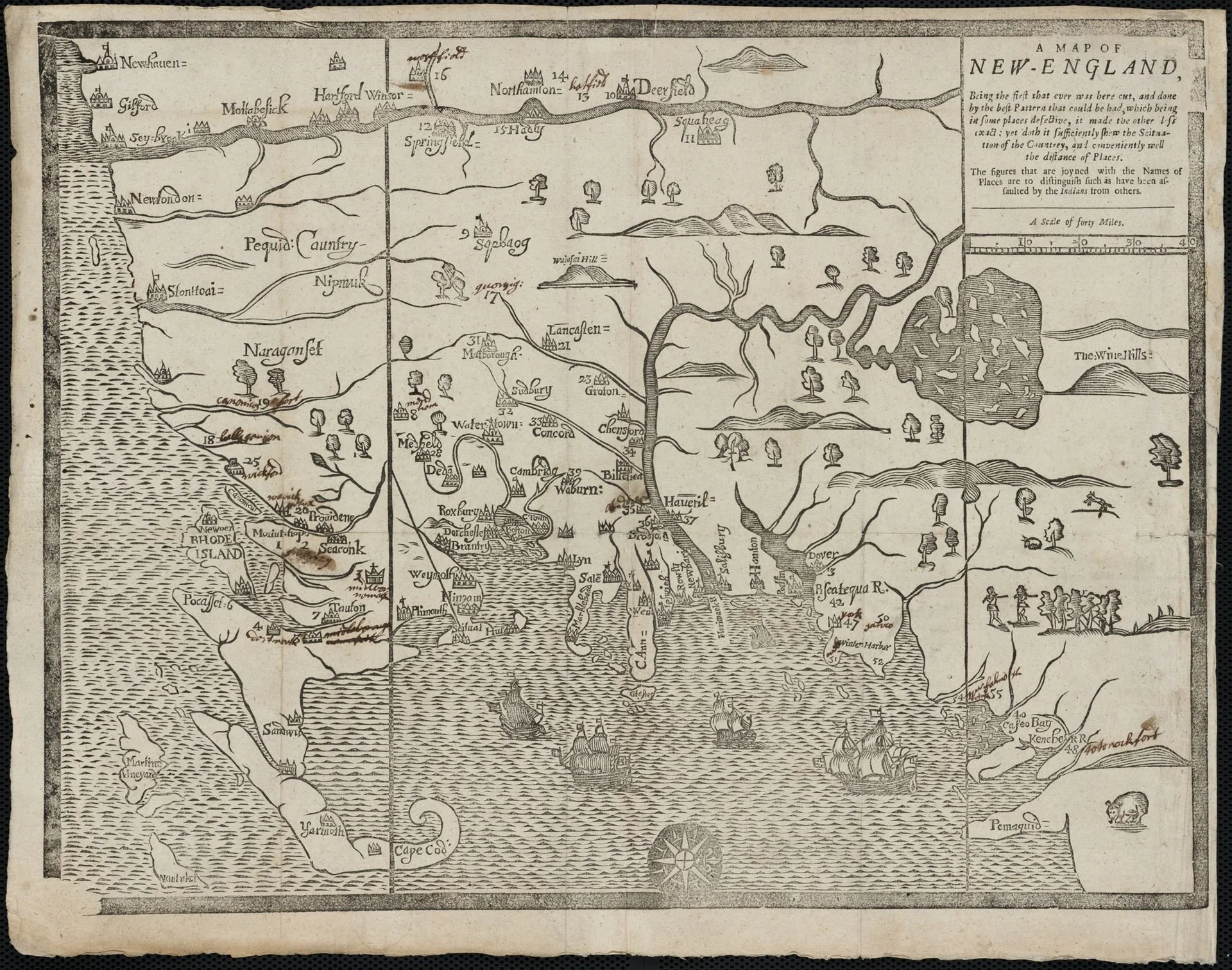
Will Amazon spawn old-fashioned Main Street retailing?
"View of Manchester, Vermont, '' by DeWitt Clinton Boutelle (1870)
From Robert Whitcomb's "Digital Diary,'' in GoLocal24.com:
What will become of cities as more and more work is done on the Internet and more and more stuffis delivered by mail (and drones?). At first glance you might think that these changes will hollow out the cities.
But people seek respite from screens and, for that matter, much paid work will continue to be done off screen. Consider that big growth areas for future jobs include such trades as electricians, plumbers, roofers, linemen, etc.
Seeing people in the flesh, not just virtually, will become more attractive as we become sated with screen life. Indeed, it’s essential for good health. And important decisions will continue to be best completed, and new ideas most cogently expressed, in real encounters. That’s one reason that Manhattan still thrives, in spite of its high costs. You can’t do a merger deal online. You have to meet in person.
Young adults, especially those with children, will continue to move to, or stay in, the suburbs, but future suburbs will look different from ‘50s- and ‘60s-style subdivisions. For one thing, they will have dense, very walkable centers for shopping, distribution and entertainment, and, especially, meeting people, with many smaller specialty stores in place of the vast malls and even vaster windswept parking lots around them. There will be fewer ugly big-box stores because so much of their brand-name stuff will be shipped directly to customers via Amazon, etc.
Highly specialized stores, many with unique items – some of them locally made ---can do well in these suburbs-becoming-mini-cities within broader metro areas. They’ll be staffed by salespeoplevery knowledgeable about their products and services and with long-term relationships with customers.
The Boston Globe reports: “Credit Suisse has predicted that upwards of a quarter of the 1,200 malls in America will close in the next five years.’’
“Today, if you know what you need, you go to Amazon and buy it,’’ Pam Danziger, president of the Pennsylvania-based Unity Marketing, told The Globe. “Where you’re going to find interest is on Main Street and not in these homogeneous same-old, same-old outlet stores. Main Street — where people really know you — that’s where the future of retail is.’’
Read the highly instructive case of toney Manchester, Vt., suffering from the decline in shopping at its many national chain outlets and so now looking to go more local. Please hit this link:
https://www.bostonglobe.com/metro/2017/09/15/there-app-for-this-retail-town-suffers-age-commerce/uArZDDp6UX5lzQlB0nsciP/story.html
Meanwhile, the car culture, even in the suburbs, will probably continue to fade with further proliferation of such ride-sharing services as Lyft and Uber and the expansion and diversification of mass transit associated with our aging population and environmental concerns.
Some suburbs are starting to look like center cities. Consider Tysons Corner, in suburban Fairfax County, Va., outside of Washington. Tysons looms like a mini-Manhattan, with office and residential towers. And then there are the small old cities within broader metro areas, of which there are many in New England – think Concord, N.H. and Portland, Maine. I think that they’ll grow as people seek the conveniences of more than traditional suburban density but without the costs of living in such big cities as Boston and New York, whose centers are increasingly for the rich.
Relatively new suburban places such as Tysons are called“edge cities’’ . But we’ve got what are small old “edge cities’’ around here, such as Pawtucket, R.I., which might have the urban bones to become more lively and prosperous.
Then there are the mid-size cities, such as Providence, Worcester and New Haven. They’ll draw people with their commercial and cultural attractions but won’t have the critical mass to become big cities. Rather, they’ll be ancillaries that will perform some of the services provided in nearby big cities -- e.g., Boston and New York. They’ll continue to lure folks who want to live in real cities but want/need somewhat less density and considerably lower costs than in Boston and New York.
Even Hartford, now an urban disaster area, ought to be able to eventually turn itself around and market its assets (especially its riverfront) as well as, say, Providence has done with its advantages.
Then there will be new mini-metro areas far away from big cities. One is the Lebanon, N.H.-Hanover, N.H.-White River Junction in the Upper Connecticut River Valley. There, the intersection of two major Interstate highways – Routes 89 and 91 -- along with the presence of a well-known university (Dartmouth College) and associated large medical center has for several decades been creating a kind of city – still sprawling but gradually being pulled together by, among other things, public transportation (encouraged by the proliferation of facilities, many of them high-end, for the elderly in areas with major colleges and medical centers).
New England, with its many still well functioning towns and small cities with an almost European settlement pattern, would seem well placed to benefit from the technological and behavioral changes roiling the country, the sprawling , utterly car-dependent metro areas of much of the Sunbelt and Middle West less so. People will continue to seek community. At leastin New England that will be easier to find and/or rebuild than in most of the country.
Affirmative-action angst
The earliest known image of Dartmouth College, Hanover, N.H., in the February 1793 issue of Massachusetts Magazine. The college, officially founded in 1769, was an outgrowth of a Connecticut school for educating Native Americans founded in 1755.
From Robert Whitcomb's "Digital Diary,'' in GoLocal24.com
In other education news, the Trump administration, playing to its white male base, wants to sue colleges to block affirmative-action programs aimed at increasing the number of people of color on campuses. The implication is that black and Hispanic students get far more help than do white kids. (Asian-American students are put in another category.)
I’m not crazy about formal affirmative-action programs but colleges have, and should have, many things to consider when putting together classes. For example, many of the most prestigious colleges, including the Ivy League, give a big preference to “legacies,’’ those students, most of whom are white, with alumni parents or other close relatives.
Indeed, rich (mostly white) kids get a big advantage in admissions. First, they (or, rather, their families) can pay full tuition, a not minor consideration for admissions officers. Second, being already affluent, they and their families are naturally more likely to donate to their colleges before and after graduation – especially the legacy students. Thus Jared Kushner, with mediocre high school marks, got into Harvard – after his father donated $2.5 million to that illustrious institution. It’s unknown if Donald Trump’s rapacious multimillionaire real-estate operator father, Fred, wrote a donation check to get young Donald Trump into the University of Pennsylvania’s Wharton School as a transfer student from Fordham.
Finally, a thought experiment forwhite people: Do you really think that life would have been easier for you as a black person?
Probablythe fairest way to do college affirmative action in our increasingly genealogically plutocratic society is to make more of an effort to enable low-and-middle-income to attend. That would particularly benefit people of color, as well as poor whites.
Native impression
"Heart First'' (Dartmouth) (oil on mylar), in the show "In Our Own Words: Native Impression 2015-2016,'' at Cade Tompkins Projects, Providence, Sept. 10-Nov. 5.
It's a collaboration with Lucy Ganje chronicling the lives of native Americans in the Tribal Nations of North Dakota. These are works that Mr. Heyman created during an artist residency at Dartmouth College (which was created in the 1760s with the aim of educating Native American as well as "English youth.'')
Josh Fitzhugh: In Cuba, old U.S. cars as metaphor
Editor’s note: Insurance executive, lawyer, farmer, Vermont maple-syrup mogul and former editor and reporter John H. (Josh) Fitzhugh, sent us this piece the other day. By the way, New Englanders should be aware of the very long social, cultural and economic ties between Cuba and our region. The old Boston-based United Fruit Co. is just one example, not to mention the many New England firms that made candy, booze, molasses and brown and white sugar from Cuban sugar cane, some of it grown on farms with New England-based owners. And yes, the slave trade. My paternal grandparents and parents went down there a couple of times to enjoy the raffish activities under assorted pre-Castro dictators/gangsters.
-- Robert Whitcomb
xxx
I traveled with my daughter, Eliza, on a Dartmouth College-led tour thinking that I should “time travel” to see what Havana and the island were like now before tourism and American business interests transformed it.
I needn’t have rushed. While change is certainly underfoot in Cuba, I left the island after a week with the conviction that the tangled relationship between the U.S. and Cuba will take decades to sort out absent some leadership change as dramatic as occurred a half century ago.
First, a bit about the trip. As required by the rules of the U.S. embargo of Cuba, the trip was organized as a people-to-people exchange to enhance “contact with the Cuban people, support civil society, or promote the Cuban people’s independence from Cuban authorities.”
Dartmouth’s method for accomplishing these goals was to have us accompanied by a professor of Spanish; to organize numerous lectures by Cuban authorities; to visit various art and music venues; to eat predominately at small private restaurants called paladars; and to permit us to pepper our good-spirited and intelligent Cuban guide, Abell, with constant questions regarding the deficiencies of the vaunted Revolution. Over the course of the week we toured old and new Havana; Hemingway’s residence, Finca La Vigia; the towns of Cienfuegos and Trinidad; and places in between. To say that we were exhausted by the time we left would be an understatement.
We also all learned a lot, and by that I mean that we all struggled on a daily basis to reconcile our growing understanding of Cuba with opinions as to how American (or Cuban) policy should change to better the lives of the people of both nations. Now that may sound kind of arrogant (who are we to assume such responsibility?) but it was the truth. As an American you can’t travel in Cuba without feeling some responsibility for the ways things are, including the country’s turn toward socialism. And President Obama’s initiative to press for closer contacts with Cuba have given these thoughts greater immediacy.
Now as to some observations. It would appear that over the past 50 years, Cuba has made great strides in health care and education (provided free of charge to the population) but at a cost of economic stagnation and tremendous deterioration of its physical structures. The government is quick to lay the blame for the latter on the embargo but in my opinion it has less to do with that than with the socialist mentality that has discouraged enterprise and private investment of any kind.
A good example is the deterioration that has occurred in old Havana, the location of many beautiful European style structures. Before the Revolution, according to a tour member who had been there, Havana’s old structures, mainly of cement and stone, were in pretty good repair. Today, one in ten is missing a roof; one in five have no windows. Three a day collapse, we were told. The reason? While families are permitted to live in the structures, they are not responsible for their upkeep, which is the government’s responsibility, and whether by design or lack of funds, it has not done so. The picture above is a good example of this decline.
Today, the only structures in old Havana in good repair are tourist spots (such as government-owned hotels) or small paladars snd small hostels, owned by families which under current rules can tap into and keep some of the profits from the burgeoning tourist trade. Even major government centers, like the Museum of the Revolution, are shabby and decrepit. The Capitol building, designed to look like Washington’s, has been closed for three years (although that may tell more about Cuba’s one-party rule than its finances, frankly.)
Faced with the loss of its sugar daddy, the Soviet Union, Cuba in the mid-‘90s first went through a horrendous economic decline (they call it the “special period”) and then began to pull itself back with help from Chavez’s Venezuela and an increasing reliance on tourism. Today, China and Vietnam seem to have replaced Venezuela as major trading partners but tourism continues to grow, and with it major economic issues.
In short there now appear to be two economies in Cuba: the tourist economy, where taxi drivers, restaurant operators, hoteliers, tour operators, artists and musicians prosper; and the rest of the economy, which suffers along at $20 a month in government wages plus whatever black market income one can find. This income disparity is worsened by those lucky enough to have relatives overseas who send back “remittances,” and most of these are Cuban whites from formerly middle- and upper-middle-class families in Havana.
An example of this disparity was manifest in a dinner we had with some young artists. The young Afro-Cuban at our table has an art degree and has had some moderate success selling his work, mainly to tourists. He now supports his brother a dentist who is on the state payroll. Another example was a young man whose father was ambassador to Paris in the ‘70s. Trilingual in Spanish, French and English, he worked in a restaurant until three years ago, when he began driving his family’s original 1955 Chevy as a taxi in Havana because his income prospects were better.
The lack of investment is also apparent in the country. Cuba nationalized the hated sugar plantations and mills, but after a disastrous attempt to maximize sugar production in the 90s, has now cut back on sugar production in an effort to diversify agriculture and reduce food imports. Despite efforts to privatize small farms and urban gardens, however, a tremendous amount of land remains fallow, land that to my eye was probably cultivated before the Revolution. Coupled with the ongoing demographic flow from country to city and the lack of any environment for foreign investment, I don’t see much prospect for agricultural growth and believe Cuba’s goal of producing 70 percent of its own food a pipe dream.
In general we found the Cuban people well behaved, good humored and (as best as one can generalize such things) happy. They are proud of their independence and tolerant of their leaders. They seem willing to recognize mistakes and move on. While constantly reminded by their government that Uncle Sam is evil and untrustworthy, and that the socialist ideals of the Revolution should be venerated and followed, my sense is that most Cubans love American culture and take an attitude toward their government that “this too shall pass.” Many have become very adept at managing their immediate environment to try to benefit themselves and their families.
The prevalence of old Chevys, Fords, and Cadillacs is a kind of metaphor for this attitude, I think. Keeping these vehicles going is of course a necessity due to the U.S. embargo and a real testament to the mechanical ingenuity of Cubans, but since they are so obviously a symbol of America, and of Cuba before the Revolution, they also bespeak(to me at least) a kind of protest with the way things are and a hope as to what may eventually return. So is the practice of using the dollar sign ($) to denote an item’s cost in pesos.
Like a divorced couple, Cuba and America have much history to remember and to forget, but will forever be linked in some fashion by their proximity to one another.
Hannah Silverstein: At Dartmouth, a new system for residential life
Dartmouth College is restructuring its residential life, building a new system of clusters of residence halls that recalls Harvard's "house system'' and Yale's "college system'' but with unique characteristics of its own.
By HANNAH SILVERSTEIN, for Dartmouth Now
The house communities—a cornerstone of the Moving Dartmouth Forward plan announced by President Phil Hanlon ’77 in January—are designed to transform Dartmouth’s undergraduate residential experience, bringing more continuity to students’ on-campus living options and greater opportunity for faculty-student interactions beyond the classroom. The houses will open to students in fall 2016.
“We will fundamentally transform residential life at Dartmouth. We envision a campus that is more inclusive, where faculty and grad students play more influential roles in the lives of undergraduates, where students learn and grow outside the classroom, and where we have more options for social life and community interaction. Our new housing plan addresses each of these important needs, and today I am pleased to report that we are aggressively moving forward to implement it.”
—President Phil Hanlon ’77, Moving Dartmouth Forward speech, January 29, 2015
The six house professors include biologist Ryan Calsbeek, astrophysicist Ryan Hickox, engineer Jane Hill, sociologist Kathryn Lively, mathematician Craig Sutton, and Japanese literary scholar Dennis Washburn.
“What’s striking about the faculty who have stepped forward to lead this transition is how deeply they care about students,” says Provost Carolyn Dever. “They have each consistently demonstrated that dedication in and out of the classroom, as both role models and mentors. They represent Dartmouth’s scholar-teacher model at its finest.”
The house professors will each serve a four-year term beginning July 1, 2015, and will move into on-campus residences near their respective house communities the following summer. Associate Professor of Mathematics Sergi Elizalde, who has served as faculty director of the East Wheelock Cluster since May 2014, will continue in his role.
Students will be affiliated with a specific residential community, including the East Wheelock Cluster, and will retain this house affiliation throughout their undergraduate experience, regardless of whether they are on- or off-campus in any given term or choose to live in other accommodations.
Interim Dean of the College Inge-Lise Ameer says the house professors will work with students to help the communities define their identities and develop such activities as community meals, intramural competitions, performances, field trips, and experiential learning and leadership-development opportunities.
“Our model will be distinctly Dartmouth,” Ameer says. “We are engaged in an intensive planning process to ensure that the system meets the evolving needs of our students, both as learners and as members of a community that should really feel like home.”
The house professors will be instrumental in planning the new system in the coming year, along with a student advisory committee, the provost, the vice provost for student affairs, the to-be-appointed dean of the College, other members of the faculty, and student affairs staff.
Mike Wooten, director of residential education, says the house system will help integrate residential life more deeply with the intellectual mission of the College. “It’s really about increasing students’ sense of connection with the place where they spend four years of their lives,” he says.
The house professors were chosen from nearly two-dozen applicants, says Jon Kull, the Rodgers Professor of Chemistry and dean of graduate studies, who served on the selection committee. “We had the wonderful problem of choosing from among a pool of deeply committed and enthusiastic faculty,” he says.
Plutocrats and their kids in the Ivy League
See how the super-rich help their kids get into and prosper at Ivy League schools. This piece might be the best example yet of how America is no longer the land of opportunity it was long touted to be but a self-perpetuating plutocracy, where overwhelmingly the most important thing you can do for success in life is to pick rich, powerful and, preferably, pushy parents. Harvard and Brown universities are paradises for this sort of thing.
Another is Dartmouth College. Read this.
Salinger's high country
Statues at the wonderful Saint Gaudens National Historic Site, in Cornish, N.H., where J.D. Salinger lived for decades, though he remained in many ways a Manhattanite.
Herewith a charming look in The Boston Globe at J.D Salinger's Connecticut River Valley section of Vermont and New Hampshire. I have always found it one of the loveliest and most interesting parts of America.
I took a class in Chinese history with his wife of the time -- the '60s --- Claire Douglas, at Dartmouth. The young assistant professor seemed very smitten with this beautiful lady. Toward the end of the trimester, I was surprised that at a social gathering (at the professor's apartment) for the class, which only had about a dozen people, that the majority of the attendees (including the professor) supplemented their wine and beer with marijuana cigarettes. This was the high '60's indeed!
-- Robert Whitcomb
The Poseidon adventure
Bronze horse figurine (solid cast, with stamped and incised decoration), made in 8th Century B.C. Greece. It's owned by the Tampa Museum of Art but now will be in the ''Poseidon and the Sea: Myth, Cult, and Daily Life'' show at the Hood Museum of Art at Dartmouth College, Hanover, N.H., through May.
Poseidon was the Greek god of the sea and known as Neptune to the Romans. Oddly, Poseidon was said to have dominion over horses as well as more marine things. These creature looks a bit like a sea horse.
Beautiful sea-green verdigris on the bronze!
David R. Godine: Hero of the book
For those who love the physical book when it's produced to be a thing of beauty, this Boston Globe story about the great New England-based independent publisher David R. Godine is an inspiration. Even in these Amazonian days, publishers who see books as both an intellectual and physical art form can still sometimes make money, especially when the publisher's list turns out to include an obscure (in America) writer who has just won a Nobel Prize in Literature. That's what just happened with French writer Patrick Modiano.
"You bet we're going to make a lot of money off Modiano. You publish a Nobel Prize winner, you'd have to shoot yourself in the foot not to make a lot of money,'' he told The Globe.
But as his career has proven, profit is not why Mr. Godine got into the book business. Rather, he became a publisher because of his love of the craft that started before he made his first book while at Dartmouth College, a book that, The Globe reports, involved picking ''poems in Latin, Italian and French and using a variety of typefaces to print them as they originally appeared.''
I have reviewed some of the elegant volumes published by Mr. Godine over the past 40 years, and have met him a few times. He deserves much praise as a quiet but relentless advocate for an essential part of our culture.
College pranks, anxiety and tricks of time
By ROBERT WHITCOMB
(Reposting this, with minor changes, to mark commencement season.)
A few months ago, I was chatting with a Dartmouth College classmate about stuff that happened when we were students in 1966-70. I mentioned someone we knew in common and recalled that he was in a certain fraternity. The guy I was talking with, Denis O'Neil, a screenwriter who recently published a part-memoir, part-novel of that period titled Whiplash: How the Vietnam War Rolled a Hand Grenade into the Animal House, politely corrected me; in fact, this person was in another fraternity.
Time has fragmented and mingled stories in my memory and those of others from that era, now almost half a century ago. One could argue that it was a tumultuous era, and thus it's easy to get things scrambled, but most times are tumultuous and transitional. Mr. O'Neil makes much of the stress caused by the fear of being drafted and sent to Southeast Asia, but as bad as that was, it was much worse for young men in World War II. Whatever. We're all the centers of our own universes, and we create narratives to explain ourselves to ourselves and others and to place ourselves in history.
Certainly, the huge size of the Baby Boomer generation, and technological and social changes of its young times, were dramatic, though I would argue that except for improvements in the rights of racial minorities and women, the transformations caused by the Internet (which increasingly looks as if it has made things worse for most people) have been much bigger than "Sixties'' changes.
Still, it's true that in that period one had the distinct sense of living in a discrete and vivid era, which actually began about 1966 and ended about '73. People who lived in the "Roaring Twenties'' -- 1924 to the Great Crash of October 1929 -- told me in "The Sixties'' that they had had a similar sense back in the Coolidge administration.
Youth is intense, and so the memories the now-autumnal people of "The Sixties'' are intense, if sometimes erroneous. From Mr. O'Neil's book, which centers on pranks, fun, romance (not always fun) and anxiety, you might think that 80 percent of a male undergraduate's time was spent drunk, seeking young women to have sex with and trying to get out of the draft. In fact, even for non-nerds who disliked what we then called "booking'' (has the World Wide Web come up with its own equivalent phrase?) most of the time was spent going to class, studying and sleeping, not "raging'' (the word for partying).
After all, a lot of students wanted to get into good graduate schools and then fancy jobs. A lot did, and went on to become perhaps the greediest generation in U.S. history. Mr. O'Neil was wise to have constructed his book at least in part as a novel, letting his imagination and telescoping of events provide a better story for the movies, a business he knows very well. If they do make a film of his story, I'd be interested to see how much of it gives a sense of the more humdrum aspects of college life for middle-to-upper-class late adolescents back then.
L.P. Hartley's line "The past is a foreign country: they do things differently there'' is much quoted but people don't do things as differently as they might like to think 50 years later.
Blighted and bright college days
Robert Whitcomb (rwhitcomb51@gmail.com) is a Providence-based editor and writer.
Blighted and bright college days
Dartmouth Rhodes Scholars, from Canada
Canadians get to win Rhodes Scholarships, too, as these two Dartmouth College seniors just showed.



